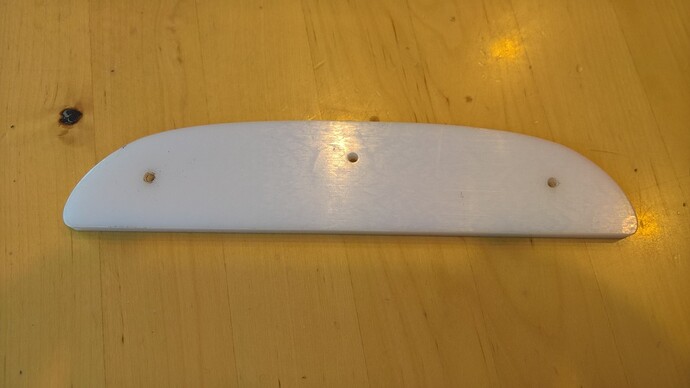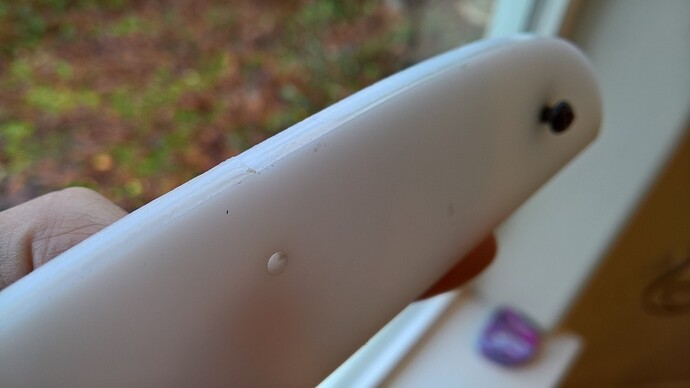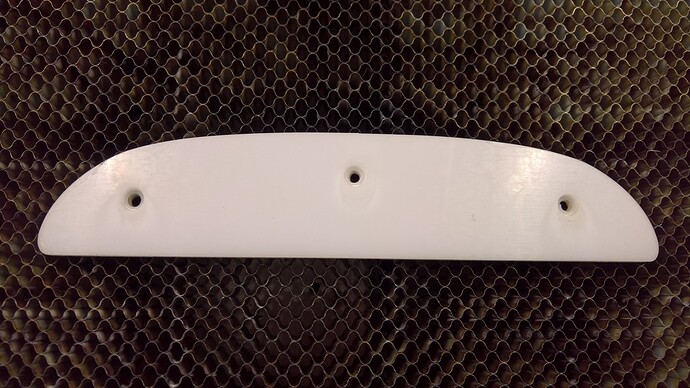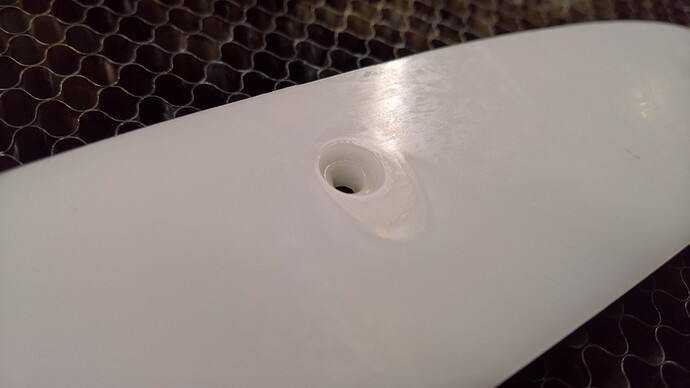My daughters found my old skateboard and were playing around with it the other day. I noticed that the plate that protects the back of it for breaking was worn through.
I decided this was an excellent chance to try 1/4" acetal. I scanned in the existing part and traced the outline in Illustrator and placed 3 1/8" holes in the same locations as the old one. I was able to cut through the 1/4" acetal with no issues, it worked great.
It was a bit of a tight fit for the screws, but not too bad. However, the thickness and length of the screws wasn’t quite right.
I decided to modify the piece a bit to make it fit better. I measured the screw heads and then created a new cut/etch file that would give me 0.13" holes and 0.3" etched recesses around those holes. It was a simple shape of two circles and one filled.

I was able to copy and paste it 3 times and zoomed into the piece on the bed to align them which worked well.
I used 3 passes in the end which gave me a nice deep recess that the screw heads could countersink into and reach further through the board to the t-nuts on the other side to actually fasten it.
After that I was able to attach it in place of the old one and the kids are ready to go out and shred again
(I still need a replacement for one of the screws from the original set that was sheared off)







